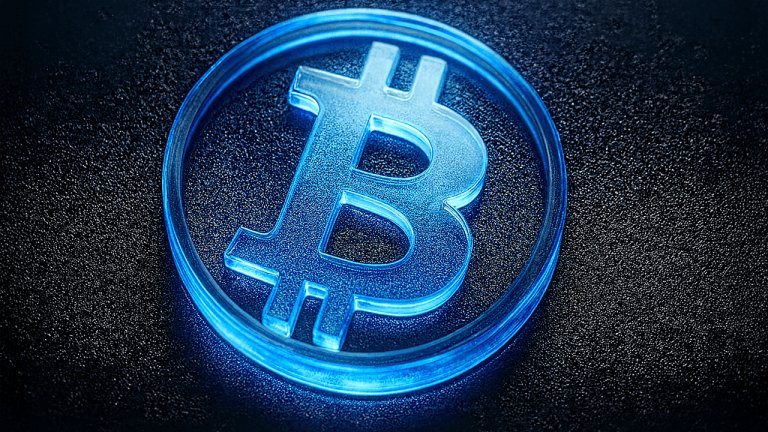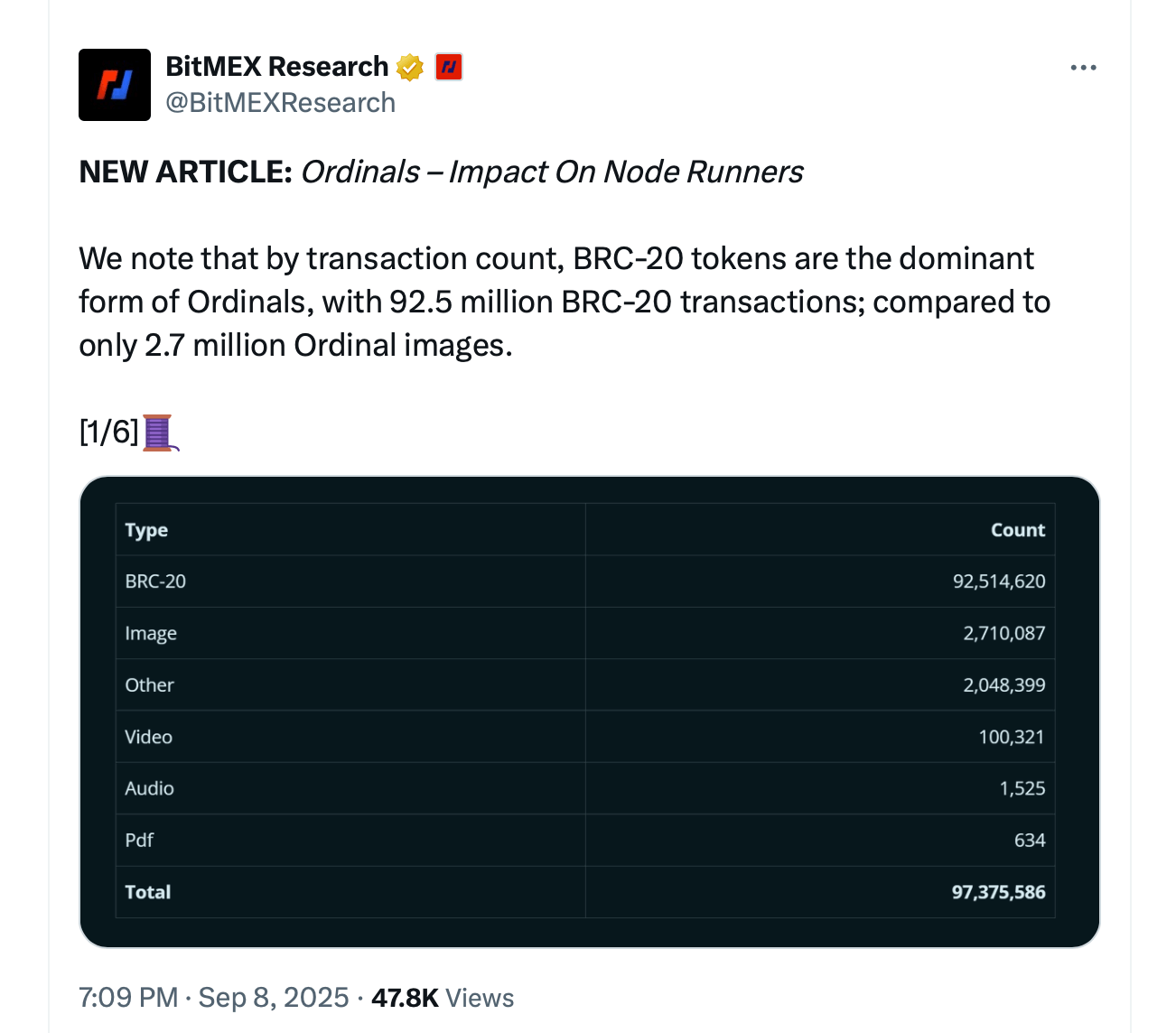
In a newly published report, BitMEX Research and its analysts say BRC-20 activity, not image inscriptions, is the greater strain on many Bitcoin node operators.
UTXO Explosion Traced to BRC-20 Transfers, BitMEX Research Finds
In the report, the researchers argue that small BRC-20 transfers expand the UTXO set and raise validation load more than large image data does. BitMEX Research frames the comparison strictly from a node-operations standpoint rather than a policy judgment.

BitMEX Research tallies about 97.4 million Ordinal inscriptions since late 2022, including roughly 92.5 million BRC-20 events and 2.7 million images. Despite the count gap, the researchers find image data occupies about 30.0GB onchain versus 27.8GB for BRC-20, while images use fewer weight units due to the witness discount.
They stress mechanics: Essentially, image payloads sit in non-executed Taproot witness fields, so nodes bypass signature checks, a heavy step. By contrast, BitMEX researchers say BRC-20 transfers resemble ordinary transactions, increasing verification and inflating the UTXO set. The report estimates that the UTXO set grew from 84 million to 169 million outputs between December 2022 and September 2025, largely tied to BRC-20 usage.

They also quantify fees: BRC-20 transactions have paid more than 5,000 bitcoin, a higher rate per byte since outputs are not discounted in witnesses. The researchers say this helps explain why BRC-20 consumes 13.9 billion weight units, compared with 8.9 billion for images.
To test effects, the researchers synced Bitcoin Core v29.1 on Ubuntu with eight CPU cores, 8GB RAM, a 1TB SSD, and a 1Gbps link. The report explains that they regressed verification speed against Ordinal volumes with “assume valid” both on and off.
BitMEX Research reports inconclusive but fairly consistent results. With assume valid off, the strongest relationship appeared between average Ordinal size and verification speed, with an R value around 11%, suggesting larger images can modestly speed verification.
The team cautions against over-interpreting the regressions due to network randomness and non-full blocks, which can flip the expected effect. They further invite replication.
Lastly, the analysts insist they do not endorse large images as “good” for Bitcoin. Instead, they offer a narrow takeaway: image inscriptions may slightly ease validation, but BRC-20 traffic is a concern for node resources via UTXO growth, even as both still compete with financial transactions for blockspace.
The release follows weeks of heated discussion among node operators over Bitcoin Core and Bitcoin Knots. While Core remains the leading client, Knots—a software variant that enables spam filtering—has climbed to more than 19% of the network’s nodes.
Author: Jamie Redman
Source: Bitcoin
Reviewed By: Editorial Team



